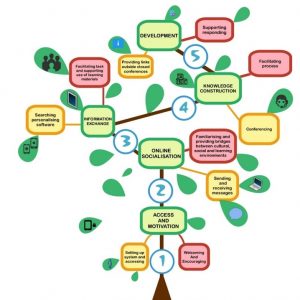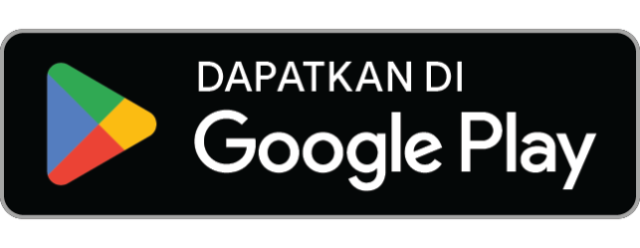Teachers or facilitators have big roles in designing a learning. The roles are like making scaffolding of learning, determining effective media and technology to use, and strive for having students actively involved in learning process. Those three components can be factors that support learning success.
Some theories were developed especially to formulate effective scaffolding to make students actively involved in online learning process. However, sometimes those theories are not relevant to be implemented in virtual classes. Many people are still confused or hesitant to make scaffolding in online learning process. Even, many cases are found that teachers only directly give material to read and assessment to be accomplished. There is no classical discussion or team work at all. The learning process is not effective and meaningful for students. Whereas, nowadays, trend of virtual classes still become choice to be taken because of the condition or various benefit of it. Therefore, teachers have challenge to upgrade the quality of the online learning. One of the ways is by giving more portion of attention to online learning scaffolding to create effective and happy learning environment.
One of professors from Leicester University, Prof. Gilly Salmon, is one of researchers who develop theory for the problem above. It was started when she worked for open university that used online learning system. This university had thousands students came from various remote areas in UK and Europe. On that time they used rudimentary technology. Salmon studied problems and everything in the whole learning process. The result of her study was developed to help others who need reference about online learning environment and how to use online learning system of the institution. One of her findings is called as 5 stage model.

Salmon 5 Stage Model
Salmon 5 stage model is a framework which can be used by teachers and learning designers in designing success online or blended learning. The stages model is a structured developmental process which is hopped be able to make students easier to be actively involved in learning process while also upgrading their skill in team work. Besides, Salmon 5 stage model is also made to create fun learning environment for students. Here are the stages.
Stage 1 Access and Motivation
In the first stage teachers or learning designers should be able to determine appropriate platform, management system, social media system, or application which will be used for conducting online learning. After that, the most important thing to do is ensuring that students have easy access toward those platform, system, or application. The ease of students in accessing them will decrease at least one burden of students. Furthermore, they will be more attracted to dwell in it. It indicates that students are motivated to be involved actively in learning process.
Beside the easy access, in this first stage teachers should also give welcoming such in the face to face learning. It can be a greeting, simple description about the course, and encouraging students. This kind of communication is important to make students feel pleasant in this digital environment. This pleasure will be able to emerge sense of belonging within the students so they will feel as important part of the class. Therefore, they will engage in all learning activities that have been designed by the teachers.
Encouragement is also given to students in this stage to grow their confidence that they capable to be in the class process. The image of a fun learning should be also conveyed to make them enthusiast to follow all activities from the beginning to end.
Here is the example of welcoming and encouraging (the platform used are Google Classroom, Google Meet, and Google Docs).
“Hallo. Howdy, everyone? Do you still imagining of travelling somewhere? What place do you really want to visit? Anyway, have you ever got information about historical places? There are so many amazing historical places to be visited in the world such as Borobudur Temple, Hagia Shopia, Eifel, Pyramid, Great Wall of China, etc. Perhaps those historical places can be good recommendation for you.
Well, historical place is appropriate with our material today. The material is descriptive text about historical places. We will learn while enjoying the amazing historical places and you will make writings about it in to be shared to people in the world through travelling blog or website. So, make sure everyone stay tune during this 90 minutes so that no one left to enjoy this journey.”
Salmon 5 stage model is a process with a concept like stair from below to up steps. Prof. Gilly Salmon stated that the success of lower stage will influence the success of the next steps. Therefore, it is important to ensure students have :
- easy access toward platform and system which are used for learning
- motivation to be actively engaged in learning process
Stage 2 Online Socialization
This stage is about familiarizing and providing bridges between cultur, social, and learning environment. Online socialization can be done by announcing about platform and how to use it in learning activities. Stage 2 also involves students to establish their identity in learning group. They will be divided into several small groups to work together. The duty of teachers here is creating small micro community through active and interactive activities. The grouping can be done by various technique such as application for random grouping or just based on teachers decision to make team work run well.
Here are the example of implementing stage 2:
- students read information from teacher, for example: “Well, students, in this first part we will meet online via Google Classroom, then you can access videos and material that have been uploaded there. You can learn about the definition and detail generic structure. While the discussion during our learning will be made via Google Meet.”
- students read the materials that have been given by teachers.
- students and teachers discuss material about descriptive text via Google Meet
- students are divided into some groups
- each group join break out room of Google Meets so that they can discuss in small group
- each group get a name of historical place including important information about the place in form of video and text that have been uploaded in Google Classroom.
In this stage, students are given motivation to comprehend material and information well so that they can contribute optimally in their group.

Stage 3 Information Exchange
In this stage 3 teachers facilitate task and support use of learning materials. Here every single student in each group will discuss and exchange information about the topic they get. The discussion is done for achieving learning goals through assessment or project to be accomplished. Therefore, teachers must ensure that each group have comprehended the flow of the discussion. Teachers can guide them by giving discussion outline or guiding questions to make a good discussion flow.
Here are the example of information exchange stage:
- Each group learns and collects information about the historical place
- Each group has been ready in Google Meet breakout room made by teacher as the host
- Teacher gives outline to guide the discussion like in the picture below

Discussion outline about descriptive text
- Discussion is running, every student must contribute idea or information they have from video they watched, text they read or their background knowledge
- Each group recap the important information of the historical place they have discussed as material for composing descriptive text
Stage 4 Knowledge Construction
In the 4th stage, teachers facilitate students to construct knowledge. They may plan students’ interaction to be more collaborative and more team oriented. Students are given opportunity not only to be consumers but also contributors of knowledge. Competency area that can be developed here are creativity, critical thinking, practical thinking, discovery, applying and practicing. If the teachers are success applying stage by stage from the beginning students will feel happy and the goals in this stage will be achieved as well.
For instance, after students recap the discussion result about important information of the historical places, they compose a descriptive text based on it. They can use Google Docs which can be accessed by all group members so they can write collaboratively. The text must be based on the generic structure and the component of the descriptive text. Hence, all group members should support each other and contribute their thought to have good quality work.
After finishing the description text, all members post their work in a travelling blog which has been prepared by teachers. Then, every student as personal visit the blog to give comment to their friends’ work. The comments can be about the content, structure, and their impression or their dream related with the historical places in the text.
Stage 5 Review
Activity in stage 5 is “review” which can be done through reflection and evaluation. It is important to measure students’ understanding toward the material. Students can do reflection by writing down about what they have learned, what they have understood, and what they want to understand more in the discussion column or via Google Docs. Students can be asked to complete their reflection by adding the emoticon 😊 or ☹️ to reflect their feeling during the learning process. Besides, the reflection can be made in spoken form via voice note message. Then, teachers can respond them and give more links to have more comprehension about the things that students want to understand more. While the evaluation can be conducted by giving written test using Google Form or another online quiz application. Feedback of learning process and the outcome can be given in this stage as well.
Conclusion
As explained above, Salmon 5 stage model is a framework that can be used by teachers and learning designers to design an online or blended learning. The stages of online or blended learning made by Prof. Gilly Salmon consists of access and motivation, online socialization, information exchange, knowledge construction, and review. It helps a lot for creating a fun and effective online learning.

